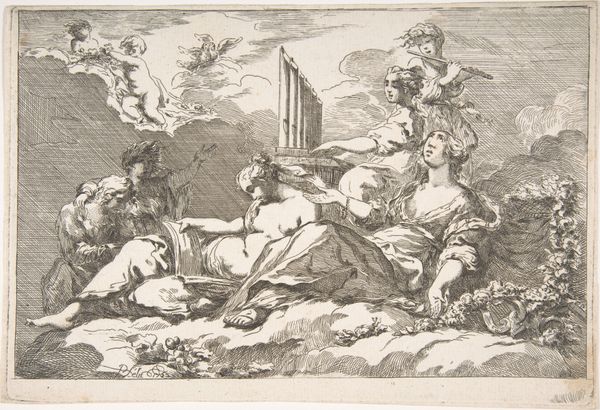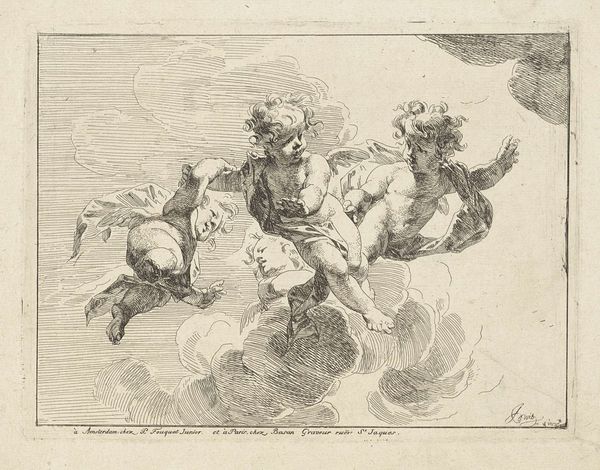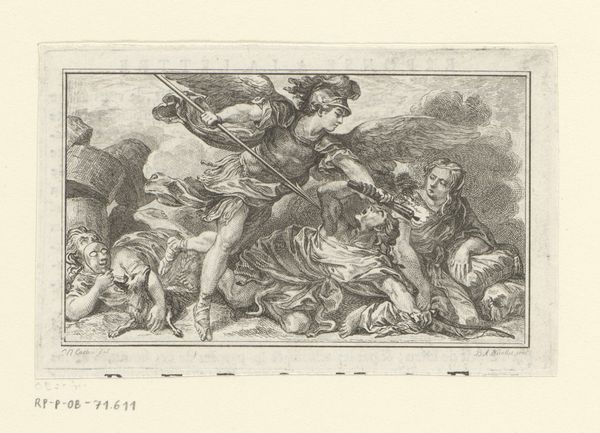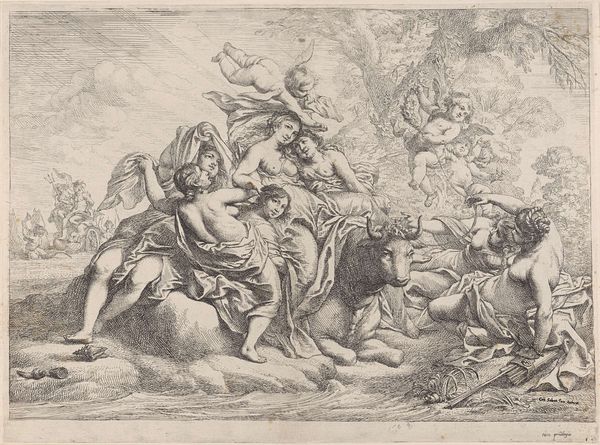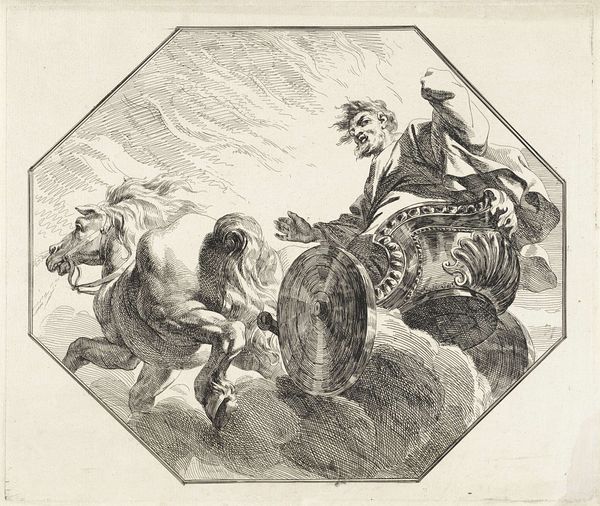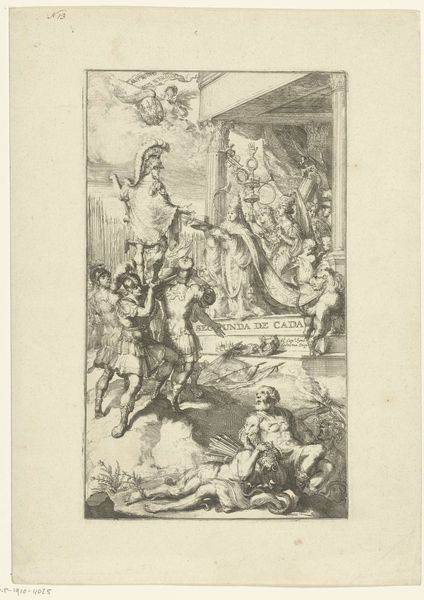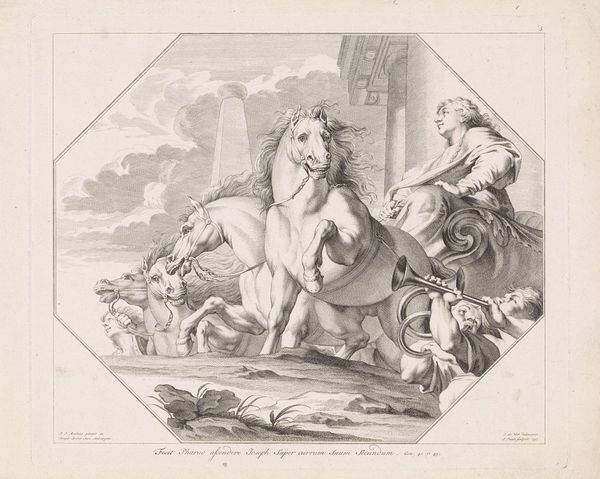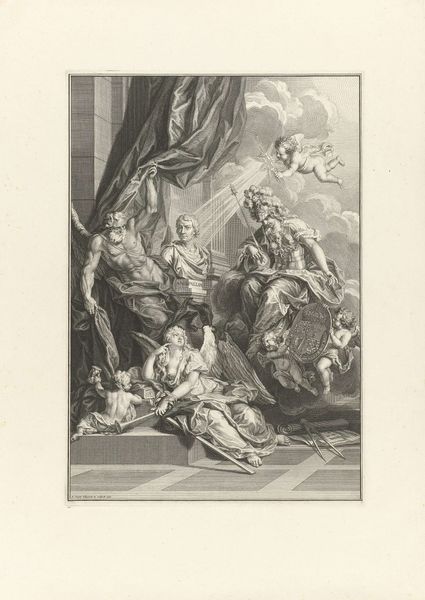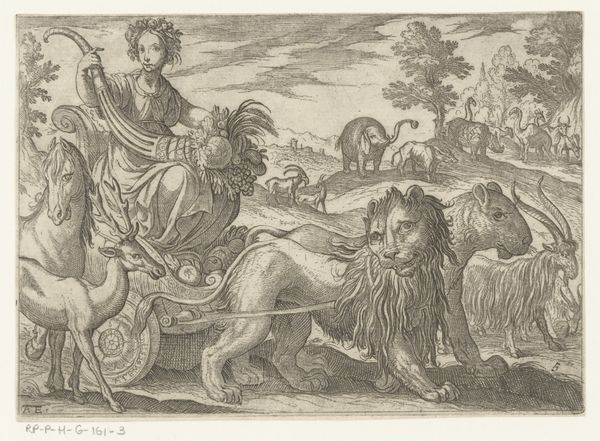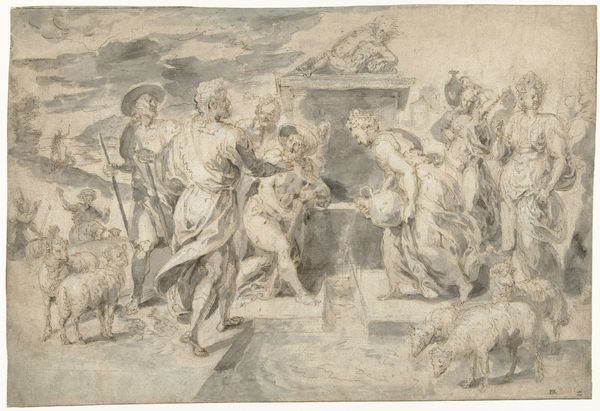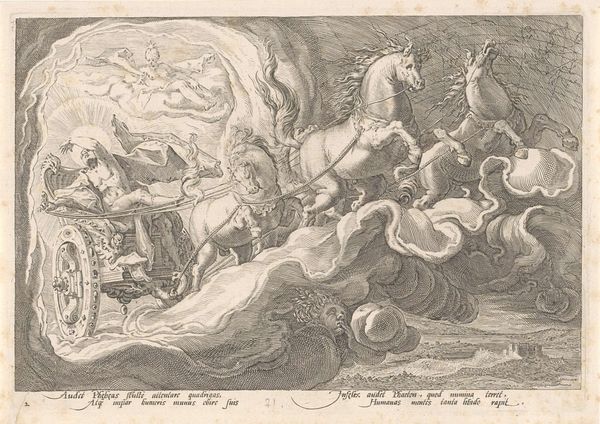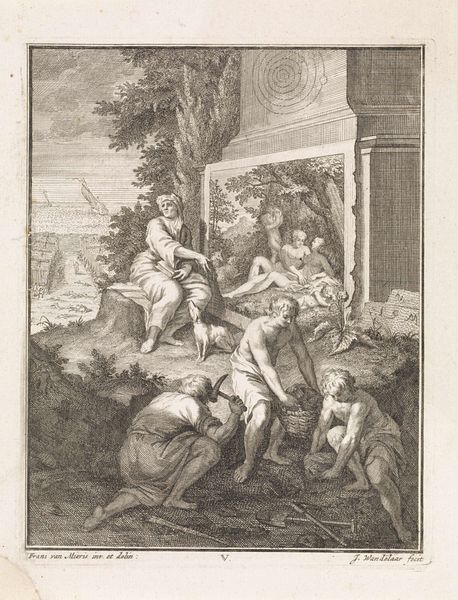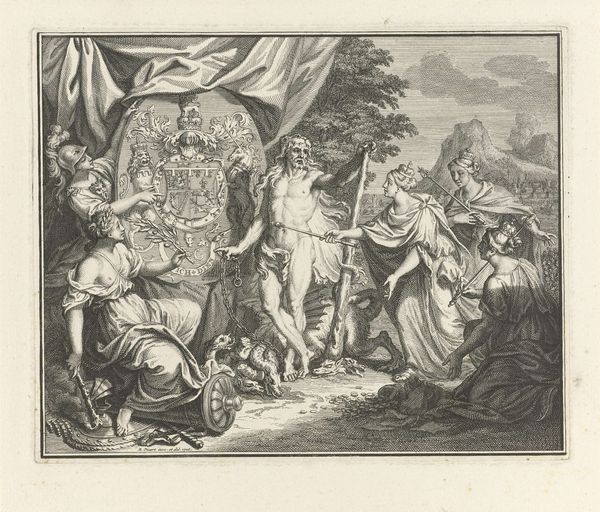
engraving
#
baroque
#
old engraving style
#
figuration
#
history-painting
#
engraving
Dimensions: width 335 mm, width 398 mm
Copyright: Rijks Museum: Open Domain
Jacob de Wit created this print, "Jozef in de zegewagen," in the Netherlands, likely in the first half of the 18th century. It presents a scene of Joseph from the Book of Genesis, not as a humble figure, but as a triumphant one, riding in a chariot. The visual language is steeped in the grand tradition of Baroque art, reminiscent of triumphal entries of Roman emperors. This elevation of a biblical narrative to the level of classical grandeur reflects the cultural aspirations of the Dutch Republic, eager to align itself with historical empires. But what does it mean to portray a biblical figure in such a self-consciously grandiose way? Perhaps de Wit’s print catered to a wealthy, merchant class, eager to display its own power through these historical and biblical allegories. Further research into the print's patronage and reception could reveal the social dynamics at play in its creation and consumption. Studying the print culture of the Dutch Republic will offer insight into the public role of art during this period.
Comments
No comments
Be the first to comment and join the conversation on the ultimate creative platform.
